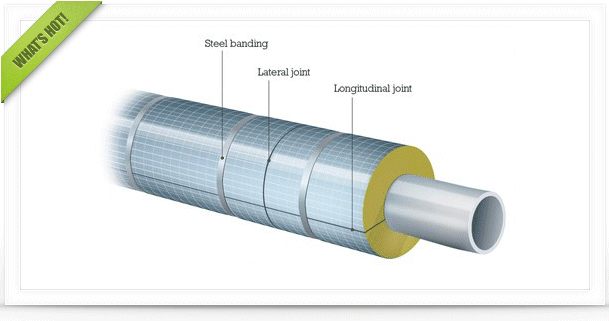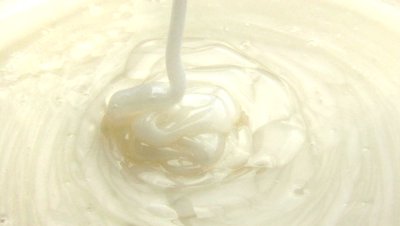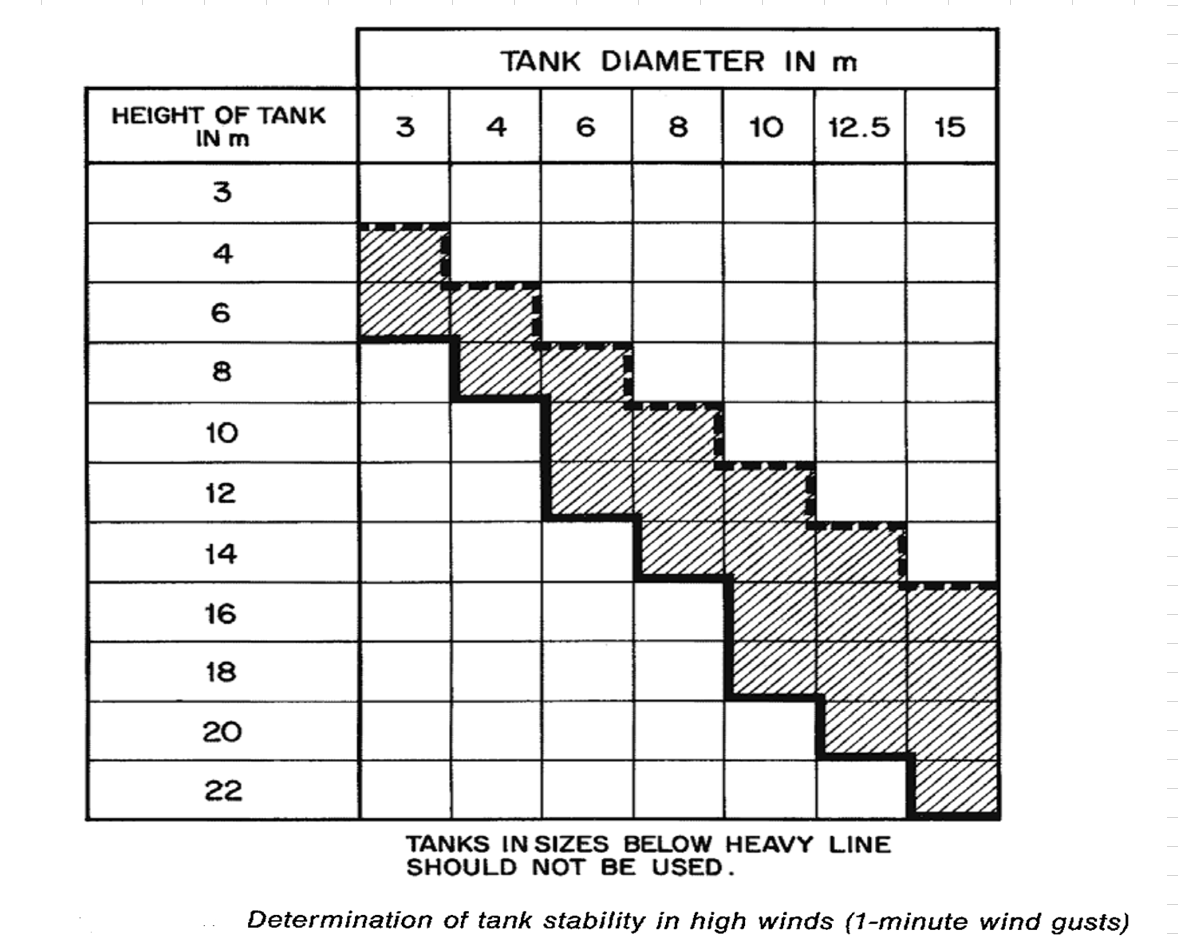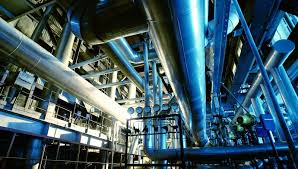Hello Guys,
I'm have been visiting this thread always and has been very helpful in many ways. I have been working on relief devices siince last 6 months and have learned many things in this forum. Now I have got some doubts?
I need to do relief valve calcs.
The only information i have got is the P&ID which has 45# Nitrogen line and on one particular line they need to size a entire new PSV.
Description: The 45# Nitrogen service needs a relief valve sized for regulator failure with a relief pressure of 60 psig.
Where do I start from here??
Thanks in advance
Visitor
|
|
Relief Valve Calculations
Started by Guest_Rahul Thatte_*, Sep 30 2004 06:05 PM
8 replies to this topic
Share this topic:
#1
 Guest_Rahul Thatte_*
Guest_Rahul Thatte_*
Posted 30 September 2004 - 06:05 PM
#2

Posted 01 October 2004 - 05:40 PM
Rahul:
I'm glad you asked that question. It's very basic, but it is vital to know the answer from an experienced point of view. First, let me say that I've led task force teams of engineers doing nothing but identifying all the PSVs in a very large chemical plant in several projects and locations. Therefore, I can honestly state: Been there, done that.
The answer to your question is: get physically out in the plant environment and see, touch, and verify that the P&ID you are working with is veritably "as built" - which, if it follows the current situation in the USA, I doubt it is. Look at the critical points you will have to consider in designing and installing the final product PSV: the inlet and discharge nozzle positions, possible lengths, and pressure constraints. Study and analyze the physical constraints like height, location, accessability, etc. Then take a lot of digital photos of the area and go back to your process desk and start identifying all the possible and credible over-pressure scenarios. This work should keep you busy for approximately 16 to 24 manhours. You should also compile and amass all your fluid's physical and thermo properties required for the eventual calculations (which should only take a couple of hours, if only single phase is involved; if 2-phase is possible, prepare yourself for more rigorous thinking and calculations).
If you really have done your homework in reading these forums about PSVs and their applications, you will have learned that the most important and really vital work for you to do flawlessly is the identification of the controlling, worse case scenario. This is where your concentrated efforts will not go unrewarded. It is vital for the sake of real, expected safety that you succeed in identifying the veritable worse case. Spare no work or time in this endeavor. Do not simply believe that regulator failure is the worst case unless you are prepared and capable of proving that to be the case to everyone involved in the operation: from process design to operating personnel. This proof should be done at the Hazop required in the Management Of Change (MOC) procedure that you should fulfill.
The above is just a nutshell-full of what you really have to do; however, I believe it contains the most important and pre-requisite work for you to immediately start on.
And don't forget: Don't put any trust in the P&ID being "as built" and believable. Prove it to yourself by going outside and walking all the critical piping out to prove that you have the correct and accurate process description in your grasp.
Good Luck.
Art Montemayor
I'm glad you asked that question. It's very basic, but it is vital to know the answer from an experienced point of view. First, let me say that I've led task force teams of engineers doing nothing but identifying all the PSVs in a very large chemical plant in several projects and locations. Therefore, I can honestly state: Been there, done that.
The answer to your question is: get physically out in the plant environment and see, touch, and verify that the P&ID you are working with is veritably "as built" - which, if it follows the current situation in the USA, I doubt it is. Look at the critical points you will have to consider in designing and installing the final product PSV: the inlet and discharge nozzle positions, possible lengths, and pressure constraints. Study and analyze the physical constraints like height, location, accessability, etc. Then take a lot of digital photos of the area and go back to your process desk and start identifying all the possible and credible over-pressure scenarios. This work should keep you busy for approximately 16 to 24 manhours. You should also compile and amass all your fluid's physical and thermo properties required for the eventual calculations (which should only take a couple of hours, if only single phase is involved; if 2-phase is possible, prepare yourself for more rigorous thinking and calculations).
If you really have done your homework in reading these forums about PSVs and their applications, you will have learned that the most important and really vital work for you to do flawlessly is the identification of the controlling, worse case scenario. This is where your concentrated efforts will not go unrewarded. It is vital for the sake of real, expected safety that you succeed in identifying the veritable worse case. Spare no work or time in this endeavor. Do not simply believe that regulator failure is the worst case unless you are prepared and capable of proving that to be the case to everyone involved in the operation: from process design to operating personnel. This proof should be done at the Hazop required in the Management Of Change (MOC) procedure that you should fulfill.
The above is just a nutshell-full of what you really have to do; however, I believe it contains the most important and pre-requisite work for you to immediately start on.
And don't forget: Don't put any trust in the P&ID being "as built" and believable. Prove it to yourself by going outside and walking all the critical piping out to prove that you have the correct and accurate process description in your grasp.
Good Luck.
Art Montemayor
#3
 Guest_Rahul Thatte_*
Guest_Rahul Thatte_*
Posted 04 October 2004 - 05:10 PM
Dear Art Montemayor,
Thank you very much for your valuable information. Unfortunatly I cannot make it to the field and check all the things you mentioned. But I have requested my project manager to let me into the field area and I'm hoping that he does.
I really appreciate your help and your reply has taught me few things which I need to look at, which I guess I have missed at some point or other.
Regards
Rahul
Thank you very much for your valuable information. Unfortunatly I cannot make it to the field and check all the things you mentioned. But I have requested my project manager to let me into the field area and I'm hoping that he does.
I really appreciate your help and your reply has taught me few things which I need to look at, which I guess I have missed at some point or other.
Regards
Rahul
#4

Posted 04 October 2004 - 06:00 PM
Rahul:
Your interest in going to the field is a direct measure of your present and future value as a professional engineer. I don't know what country or locale you are at and I also don't know the experience and qualifications of your project manager, but he/she would be well advised to heed your request to get out to the job site and do the essential confirmation of field conditions and P&ID verifications. This is a very serious point because blind faith in a faulty or flawed P&ID can lead to serious and tragic accidents. This has been proven to be so bad in the past that the USA legislature had to enforce government action directly on industry (OSHA) in order to ensure that accurate and updated P&IDs are kept at plant sites and that a documented MOC method is kept up. Without these procedures in place, industrial accidents and deaths have been caused.
In my opinion, you are to be lauded for your interest and initiative in going to the field to make sure your project is done correctly and safely. It has been my unfortunate experience that most process engineers prefer the "coat & tie" office environment (complete with pretty secretaries and assistants) instead of going out into the plant and seeing that the jobs are done correctly and safely. This is a sad and bad state of affairs, should it exist. I can assure you that you stand to make a lot of tragic and fatal mistakes that can potentially cause loss of life and limb if you take your assignments as a clerical duty rather than as an engineering responsibility. For example:
I have personally seen PSVs installed with block valves inserted in the inlet nozzle without any indication shown in the P&ID!
I have seen major size PSVs (6" & 8") installed on distillation column overhead vapor lines so far away and distant from the column that the 3% inlet rule was invalidated and the column was subject to pressures beyond its MAWP!
I have seen PSVs installed on the liquid side of a vessel rather that at the indicated vapor space - which voided any possible over-pressure relief from the vapor!
I have seen PSVs installed in the wrong place and in the wrong pipe - thanks to the failure of the process/project engineer to visit and supervise the site installation! This is gross incompetancy and almost criminal.
I have seen PSVs in the field plugged with screwed plugs in order to stop them from leaking to atmosphere! And the unit's engineer didn't even know about it until I dragged him out there and showed him!
I have seen PSVs installed so close to the top of a vessel's liquid level that 2-phase flow was induced into the PSV - and the PSV was calculated for only single phase! The PSV did not have sufficient capacity to relieve under these conditions.
I have seen PSVs on kettle reactors mounted with an expander on the PSV inlet nozzle. In other words, the reactor nozzle was smaller than the PSV inlet and an expander was used to connect the smaller reactor nozzle to the PSV inlet! A direct and gross violation of PSV installations.
I could go on, and on, and on..... But the most important thing is: don't commit this kind of ignorant act. Make sure with your own eyes, hands, and nose that your specifications and instructions are being carried out accurately and safely. Your project manager should feel proud and thankful that he/she has a pro-active engineer under him/her that is willing to go to the field and do the job as well as it can be done. Don't take anything for granted nor believe anyone's story about what they think about a situation - or a worse case scenario. Prove it to yourself and stand by your professional ethics on protecting the working environment for your workers. They depend on you doing this successfully in order to be able to carry out their jobs without risking their lives.
I wish you all the luck in the world in carrying out your job successfully and safely.
Art Montemayor
Spring, TX
Your interest in going to the field is a direct measure of your present and future value as a professional engineer. I don't know what country or locale you are at and I also don't know the experience and qualifications of your project manager, but he/she would be well advised to heed your request to get out to the job site and do the essential confirmation of field conditions and P&ID verifications. This is a very serious point because blind faith in a faulty or flawed P&ID can lead to serious and tragic accidents. This has been proven to be so bad in the past that the USA legislature had to enforce government action directly on industry (OSHA) in order to ensure that accurate and updated P&IDs are kept at plant sites and that a documented MOC method is kept up. Without these procedures in place, industrial accidents and deaths have been caused.
In my opinion, you are to be lauded for your interest and initiative in going to the field to make sure your project is done correctly and safely. It has been my unfortunate experience that most process engineers prefer the "coat & tie" office environment (complete with pretty secretaries and assistants) instead of going out into the plant and seeing that the jobs are done correctly and safely. This is a sad and bad state of affairs, should it exist. I can assure you that you stand to make a lot of tragic and fatal mistakes that can potentially cause loss of life and limb if you take your assignments as a clerical duty rather than as an engineering responsibility. For example:
I have personally seen PSVs installed with block valves inserted in the inlet nozzle without any indication shown in the P&ID!
I have seen major size PSVs (6" & 8") installed on distillation column overhead vapor lines so far away and distant from the column that the 3% inlet rule was invalidated and the column was subject to pressures beyond its MAWP!
I have seen PSVs installed on the liquid side of a vessel rather that at the indicated vapor space - which voided any possible over-pressure relief from the vapor!
I have seen PSVs installed in the wrong place and in the wrong pipe - thanks to the failure of the process/project engineer to visit and supervise the site installation! This is gross incompetancy and almost criminal.
I have seen PSVs in the field plugged with screwed plugs in order to stop them from leaking to atmosphere! And the unit's engineer didn't even know about it until I dragged him out there and showed him!
I have seen PSVs installed so close to the top of a vessel's liquid level that 2-phase flow was induced into the PSV - and the PSV was calculated for only single phase! The PSV did not have sufficient capacity to relieve under these conditions.
I have seen PSVs on kettle reactors mounted with an expander on the PSV inlet nozzle. In other words, the reactor nozzle was smaller than the PSV inlet and an expander was used to connect the smaller reactor nozzle to the PSV inlet! A direct and gross violation of PSV installations.
I could go on, and on, and on..... But the most important thing is: don't commit this kind of ignorant act. Make sure with your own eyes, hands, and nose that your specifications and instructions are being carried out accurately and safely. Your project manager should feel proud and thankful that he/she has a pro-active engineer under him/her that is willing to go to the field and do the job as well as it can be done. Don't take anything for granted nor believe anyone's story about what they think about a situation - or a worse case scenario. Prove it to yourself and stand by your professional ethics on protecting the working environment for your workers. They depend on you doing this successfully in order to be able to carry out their jobs without risking their lives.
I wish you all the luck in the world in carrying out your job successfully and safely.
Art Montemayor
Spring, TX
#5
 Guest_Rahul Thatte_*
Guest_Rahul Thatte_*
Posted 19 October 2004 - 04:50 PM
Dear Art Montemayor,
Thanx you very much for your info. It seems that I will be actually going to the field and check myself in weeks time. I spoke to Project Manager and insisted on visiting the site to which he agreed for.
Rahul Thatte
Beaumont, TX
Thanx you very much for your info. It seems that I will be actually going to the field and check myself in weeks time. I spoke to Project Manager and insisted on visiting the site to which he agreed for.
Rahul Thatte
Beaumont, TX
#6

Posted 08 May 2007 - 03:58 PM
Hello Art,
I am in Houston reviewing calcualtions on Conservation vents for liquid organic storage tanks. They want to replace the conservation vents that are relieving to atmospher with ones that will release to a flare header. I am reviewing the previous calculations done in about 20 years ago that calculated the outbreathing capacity based on Thermal venting and the maximum filling rate which give results in SCFH of air. (Following API 2000) However, when they calculate the required area using the standard API equation (4A), they are using the requried capacity in SCFH air but then using the physical properties of the organic. I think this is wrong but need your expert opinion. The tank is blanketed with Nitrogen and the organic has a vapor pressure of about 2 psia. My thinking is that they should be using the physical properties of air or nitrogen since the capacity calcuation is based on air and the tank is blanketed with nitorgen. Do you think they are just being conservation here or doing it wrong. If they choose to use the physical properties of organic then shouldn't they also be using the adjusted flowrate for the organic?
I have done it both ways and only one of the vents would require a smaller stand orifice size even though the required orifice size is almost double when using the organic properties.
I am in Houston reviewing calcualtions on Conservation vents for liquid organic storage tanks. They want to replace the conservation vents that are relieving to atmospher with ones that will release to a flare header. I am reviewing the previous calculations done in about 20 years ago that calculated the outbreathing capacity based on Thermal venting and the maximum filling rate which give results in SCFH of air. (Following API 2000) However, when they calculate the required area using the standard API equation (4A), they are using the requried capacity in SCFH air but then using the physical properties of the organic. I think this is wrong but need your expert opinion. The tank is blanketed with Nitrogen and the organic has a vapor pressure of about 2 psia. My thinking is that they should be using the physical properties of air or nitrogen since the capacity calcuation is based on air and the tank is blanketed with nitorgen. Do you think they are just being conservation here or doing it wrong. If they choose to use the physical properties of organic then shouldn't they also be using the adjusted flowrate for the organic?
I have done it both ways and only one of the vents would require a smaller stand orifice size even though the required orifice size is almost double when using the organic properties.
#7

Posted 09 May 2007 - 07:45 AM
processeng,
I'd be very wary of these plans. As you know, atmospheric designed tanks are typically capable of withstanding very, very little superimposed (vapor space) pressure. Beyond this very low limit, the tank will fail.
My first concern would be the destination (flare header) pressure. What is its maximum? Is this below the atmospheric tank's "design pressure"? Secondly, you must consider any increase in pressure that would occur during a relieving event. You need a driving force to "lift" your valve, and more driving force to get the venting gases to move towards the flare header. The driving force is differential pressure. Add that to your worst case flare header pressure, and if you're still below the maximum allowable tank pressure, then you're in luck. My experience is that the information required to reach this point is often not available, and the owner is unwilling to pay to generate the needed information. In that case, I would strongly advise against rerouting the vent.
Regarding the calculations, it seems to me that normally a mole fraction of your vapors calculated as 12.7psia/14.7psia would be nitrogen. The remaining 2/14.7 would be your organic vapor. During a fire, you will have to decide if the nitrogen might be displaced with the organic vapors. So, depending on the relief scenario, I would use the appropriate composition and properties of the venting vapors. (I would consider taking the most conservative composition for all calculations to also be acceptable.)
I'd be very wary of these plans. As you know, atmospheric designed tanks are typically capable of withstanding very, very little superimposed (vapor space) pressure. Beyond this very low limit, the tank will fail.
My first concern would be the destination (flare header) pressure. What is its maximum? Is this below the atmospheric tank's "design pressure"? Secondly, you must consider any increase in pressure that would occur during a relieving event. You need a driving force to "lift" your valve, and more driving force to get the venting gases to move towards the flare header. The driving force is differential pressure. Add that to your worst case flare header pressure, and if you're still below the maximum allowable tank pressure, then you're in luck. My experience is that the information required to reach this point is often not available, and the owner is unwilling to pay to generate the needed information. In that case, I would strongly advise against rerouting the vent.
Regarding the calculations, it seems to me that normally a mole fraction of your vapors calculated as 12.7psia/14.7psia would be nitrogen. The remaining 2/14.7 would be your organic vapor. During a fire, you will have to decide if the nitrogen might be displaced with the organic vapors. So, depending on the relief scenario, I would use the appropriate composition and properties of the venting vapors. (I would consider taking the most conservative composition for all calculations to also be acceptable.)
#8

Posted 09 May 2007 - 08:58 AM
Thank you very much for your quick and informative reply. They are using an additional emergency vent sized for fire along with a separate vaccum vent and flame arrestor. The conservation vent I am talking about is for pressure only. However, I think you are correct in your concern about the back-pressure of the flare and what happens during a multiple relief scenario. I have requested this specific information to answer these questions and await a response. I also agree with the partial pressure approach to determine the molecular weight to use in the Orifice calculation. But for out-breathing, have you ever heard of anyone using the organic properties to calculate the orifice size which is based on using the calcuated SCFH of air based on API 2000? Though it will give a more conservative result the procedure is flawed in my opinion. I don't like it when people tell me its ok because it is more conservative. What happens if the organic had a molecular weight less than air?
Regards
Regards
QUOTE (djack77494 @ May 9 2007, 07:45 AM) <{POST_SNAPBACK}>
processeng,
I'd be very wary of these plans. As you know, atmospheric designed tanks are typically capable of withstanding very, very little superimposed (vapor space) pressure. Beyond this very low limit, the tank will fail.
My first concern would be the destination (flare header) pressure. What is its maximum? Is this below the atmospheric tank's "design pressure"? Secondly, you must consider any increase in pressure that would occur during a relieving event. You need a driving force to "lift" your valve, and more driving force to get the venting gases to move towards the flare header. The driving force is differential pressure. Add that to your worst case flare header pressure, and if you're still below the maximum allowable tank pressure, then you're in luck. My experience is that the information required to reach this point is often not available, and the owner is unwilling to pay to generate the needed information. In that case, I would strongly advise against rerouting the vent.
Regarding the calculations, it seems to me that normally a mole fraction of your vapors calculated as 12.7psia/14.7psia would be nitrogen. The remaining 2/14.7 would be your organic vapor. During a fire, you will have to decide if the nitrogen might be displaced with the organic vapors. So, depending on the relief scenario, I would use the appropriate composition and properties of the venting vapors. (I would consider taking the most conservative composition for all calculations to also be acceptable.)
I'd be very wary of these plans. As you know, atmospheric designed tanks are typically capable of withstanding very, very little superimposed (vapor space) pressure. Beyond this very low limit, the tank will fail.
My first concern would be the destination (flare header) pressure. What is its maximum? Is this below the atmospheric tank's "design pressure"? Secondly, you must consider any increase in pressure that would occur during a relieving event. You need a driving force to "lift" your valve, and more driving force to get the venting gases to move towards the flare header. The driving force is differential pressure. Add that to your worst case flare header pressure, and if you're still below the maximum allowable tank pressure, then you're in luck. My experience is that the information required to reach this point is often not available, and the owner is unwilling to pay to generate the needed information. In that case, I would strongly advise against rerouting the vent.
Regarding the calculations, it seems to me that normally a mole fraction of your vapors calculated as 12.7psia/14.7psia would be nitrogen. The remaining 2/14.7 would be your organic vapor. During a fire, you will have to decide if the nitrogen might be displaced with the organic vapors. So, depending on the relief scenario, I would use the appropriate composition and properties of the venting vapors. (I would consider taking the most conservative composition for all calculations to also be acceptable.)
#9

Posted 09 May 2007 - 01:41 PM
Doug:
Thank you for jumping on this very important subject and process design problem. I am presently on vacation in Tucson, Arizona with my grandchildren and find myself checking my email. Like yourself, I consider this a very important and high-priority subject. Things can go disastrously bad if not handled, designed, and implemented well from the very onset. Processeng should feel very confident with your experienced backup. You have had, as we both know, extensive and exhaustive storage tank applications very similar (if not identical) to this one. Your intensive work and labor working with out-dated and un-rated storage tanks in the past has given you license and experience to specifically address the issues being brought out. I am in total agreement with all that you've recommended.
Processeng:
You could also visit other Engineering Forums and also try to get expert advice on this application. However, with Doug's excellent recommendations and tips and with also the possibility of Phil Leckner's input (yet to come) you can hardly do any better. Everything Doug has alerted you to is a major checkpoint to keep in consideration. The actual, realistic MAWP of your storage tanks should be the #1 priority to identify with accuracy. Without this, you cannot realistically establish your maximum available SAFE pressure driving force - and consequently can't identify the allowable flare header pressure(s).
To Doug's valuable advice, I would add that you contact the conservation vent manufacturer and insist on the actual capacities of the vent at the moment it starts to open up to the time it is 100% fully open. Do not forget that this type of pressure relief is varying in capacity as the pallet is forced open more and more. Do not take full capacity credit at the MAWP setting. You may have to de-rate the conservation vent pressure setting. If so, then you really need to identify the tank's realistic and actual MAWP. If the tank is very old and in dilapidated condition, this may be very dangerous and risky to assume without a total, realistic and experienced mechanical rating on the tank(s). This will up the cost of the project - but is essential if you are to ensure a SAFE installation. I've gone through this in a Houston-area chemical plant before and it was like pulling eye teeth until management bought into the fact that they couldn't trust the mechancial condition of their 20+ year-old tanks that had no MAWP stamp on them. I like your challenging attitude where it regards safety. You are doing the correct things - just make sure you cover ALL bases. I am adding this response not to overshadow Doug's, but rather only because you addressed it originally to me. You are receiving expert, experienced advice from Doug and anything he can help you with is a positive plus. Hopefully, Phil Leckner will also pitch in. With these two experts, you have little or nothing to worry about as long as you tell them ALL THE FACTS and all of the story.
One more thing: you should have started your own thread rather than pasting your query to someone else's original thread. If you don't create your own thread it becomes rather lengthy and other people won't visit since the title doesn't really reflect what your particular problem(s) is.
Good Luck! I'm off to stroll through the Santa Catalina foothills with my granddaughters.
Similar Topics
Storage Tank Relief LoadStarted by Guest_hum464_* , 10 Sep 2025 |
|

|
||
Automatic Choke ValveStarted by Guest_Mudassssir011_* , 22 Jul 2025 |
|

|
||
Relief Path To Be Considered For Inlet Pressure Drop CalculationStarted by Guest_Ascanio E._* , 09 Jul 2025 |
|

|
||
Valve Cv InputsStarted by Guest_QuantumEng_* , 01 Apr 2024 |
|

|
||
Parallel Control Valves Downstream Relief ScenarioStarted by Guest_pklavinsJ_* , 18 Jun 2025 |
|

|

 FB
FB








